Affiliate disclosure: This post may contain affiliate links. Please see our Privacy Policy.
An emergency food supply can be lifesaving in a big emergency, and deeply comforting during a small one. While it can be hard to know where to start, it’s easy enough to take small steps to build your emergency food supply before you need it.
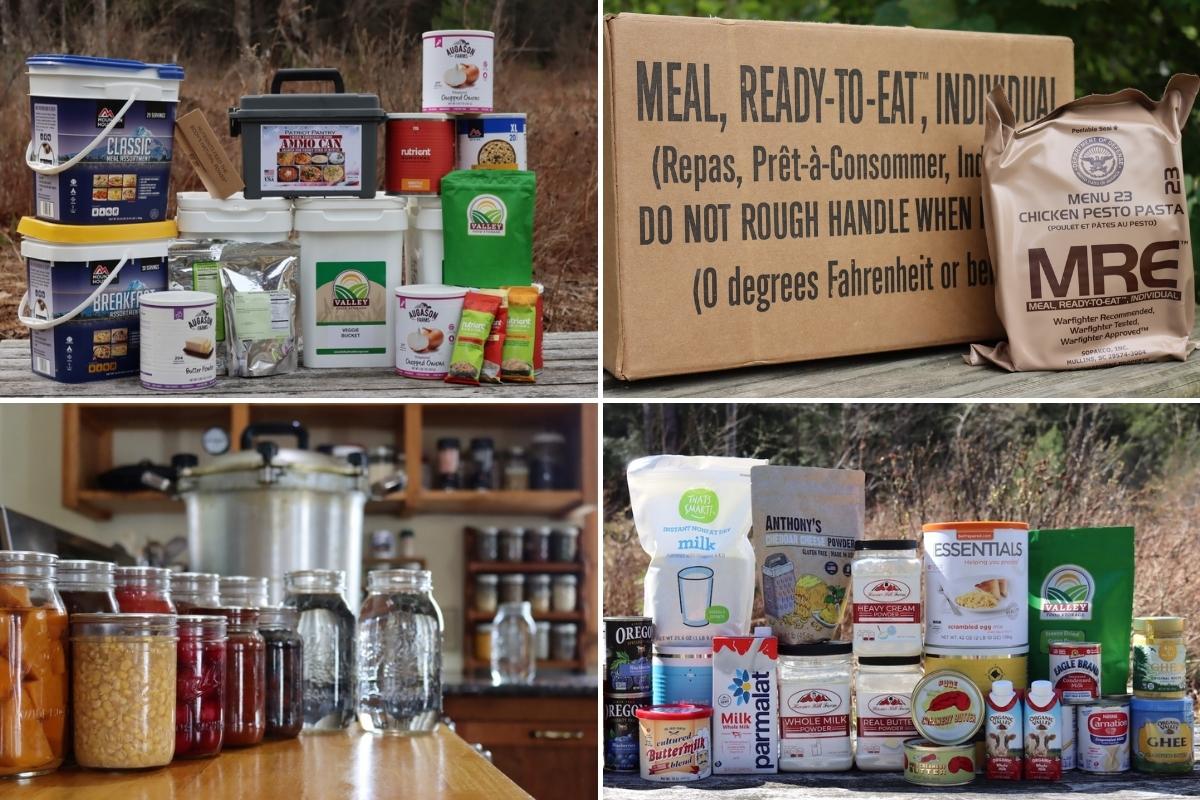
Keeping your family fed might seem simple, but everything gets a bit harder when you factor in the potential for emergencies. Everything from natural disasters like earthquakes and hurricanes, to supply chain uncertainty, global conflict, and even inflation.
You could say that we live in uncertain times, but we’ve always lived in uncertain times. Even a hundred years ago a family wouldn’t go into winter without enough food to see them through, though we routinely wake up one day without enough food on hand to make dinner.
Emergency food supplies have enabled countless generations to thrive during adverse conditions, and we’re all around today thanks to the advanced planning of our ancestors.
Emergency Food Supply Considerations
The best type of emergency food supply depends not only on your family’s needs but also on the type of emergency. Is this a short-term emergency like a temporary power outage that interrupts cooking, or a long-term emergency where you’ll be without supplies or services for days or weeks at a time?
- Calories – The first consideration for most people, will this emergency food provide enough calories to fuel your body? The average person needs 2,000 calories when not active, but as much as 3,500 calories during times of stress and exertion.
- Nutrition – Beyond just straight calories, it’s important to consider both macronutrients (protein, carbs, and fat) as well as micro nutrients like vitamins. You can live on hard tack and basic provisions, but you can’t thrive on it.
- Flavor – Is it something my family will eat? There’s no sense in storing things you’re family just won’t (or can’t eat). The flavor is incredibly important, and while you may say “I’d eat anything in an emergency,” you’re planning ahead so you don’t find yourself eating rats.
- Cook Time – Is the meal already prepared (just add water) or “heat and eat” like an MRE, or will you need a whole kitchen on hand (pots, pans, stove, etc) to get the meal on the table?
- Effort – Not just effort to cook, but effort in terms of meal planning in the midst of a crisis. Pre-packaged ready-made meals are low effort, and cooking from a deep pantry of flour and beans is high effort. Packing away pantry staples yourself also involves a lot of planning and effort, not to mention the cost of packaging.
- Cost – Generally higher effort homemade emergency food supplies (ie. stored beans and rice) cost the least. You’ll need to pack them yourself, and they’re more work to prepare, but they’ll save you money initially.
- Packaging – If you’re just keeping a deep pantry and cycling your ingredients, then packaging can be anything that keeps insects and rodents out on a day-to-day basis. If you’re putting away a long-term food supply to seal until you desperately need it, packaging becomes incredibly important to prevent spoilage.
How Much Emergency Food Do You Need?
How much food to store per person really depends on the type of emergency. Short-term planning is easier, and that can be done by just having a deep pantry, or keeping a few freeze-dried meals or MREs around.
Longer-term planning is harder, and I’d suggest more on hand than you think you’ll strictly need to get through the emergency. (If you think you’ll need 2 weeks’ worth of food, plan for 3 or 4.)
Even if you’re mostly planning in terms of long-term pantry staples, I’d suggest having some easy to prepare meal kits on hand anyway. You never know what the world will throw at you in an emergency situation, and something that’s quick, easy to prepare, and nutritious could mean the difference between putting food on the table and going to bed cold and hungry that day.
If you’re planning to survive a nuclear winter, you’ll need years of food. Most people just aren’t capable of that type of planning, but putting away an emergency food supply to last a few days, weeks or months is more reasonable.
The “official advice” used to be that you should keep at least 2 to 3 days’ worth of food on hand at all times. That quickly shifted to at least 2 weeks in early 2020.
These days, with supply chain shortages and global uncertainty, 3 to 4 weeks seems like the bare minimum you’d want on hand to ensure a good emergency food supply.
Out of an abundance of caution, my family always keeps at least 6 months of food on hand, which is enough to get us through almost anything (short of the actual apocalypse). Even then, it’d be enough to help us limp along until we can get to the growing season go all out with survival gardening (or harvest a few deer and get to work on venison recipes.)
Types of Emergency Food Supplies
There are a number of ways to build an emergency food supply for your family, ranging from all homemade and home-packed stores to simply purchasing a ready-made survival food kit from an emergency food supplier.
Here are some of the options:
- Freeze-Dried Food (25+ Year Shelf Life)
- MREs (Meals Ready to Eat)
- Naturally Shelf Stable Dry Goods (Beans, rice, etc)
- Shelf Stable Versions of Perishable Ingredients (Dried milk, dried eggs, canned butter, etc)
- Canned Food (Home Canned or store-bought)
I’ll take you through the pros and cons of each, one by one.
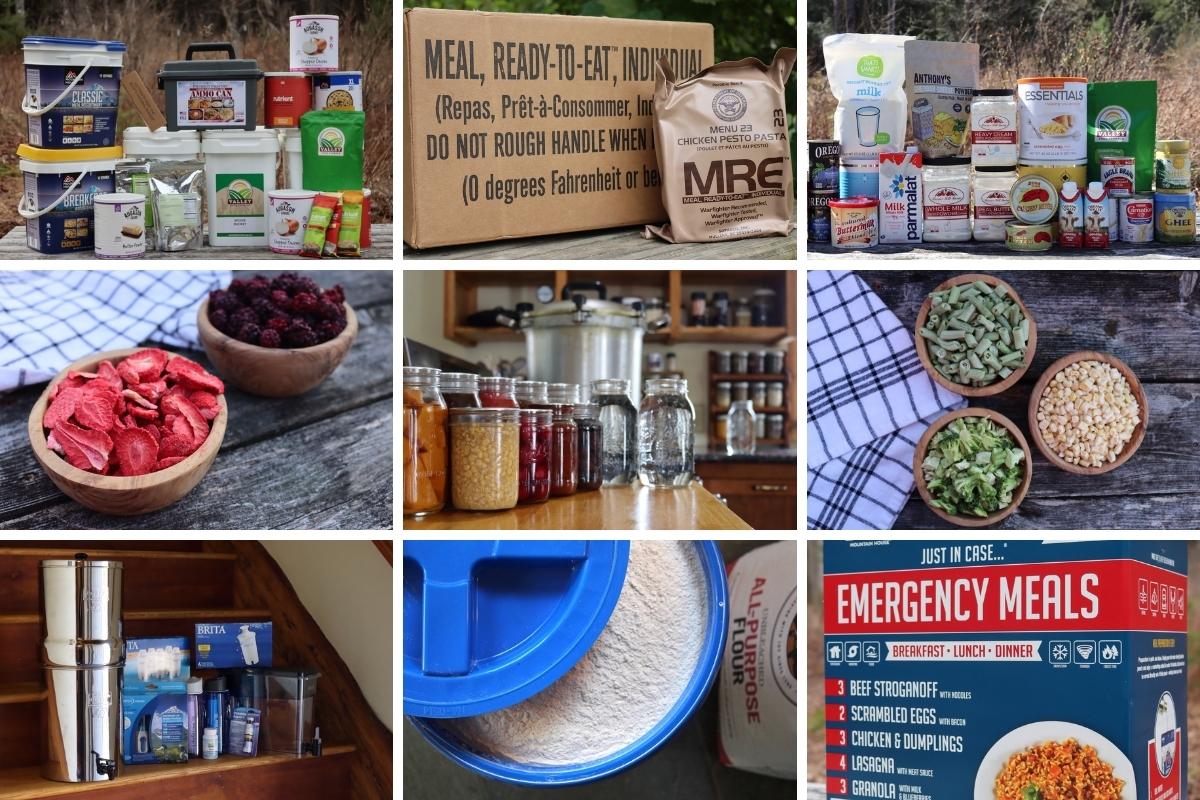
Freeze-Dried Food
For most people that don’t cook regularly and are used to convenience food, freeze-dried food is the ideal solution. It stores for 25+ years, so it’s a good insurance policy that you can just store in a back closet until needed.
Most options are just add water to prepare, and some don’t even require dishes (just tear off the top and pour in water to rehydrate). Other types are simply freeze-dried versions of regular foods that can be rehydrated and used in cooking, like freeze-dried meat, vegetables, and fruits.
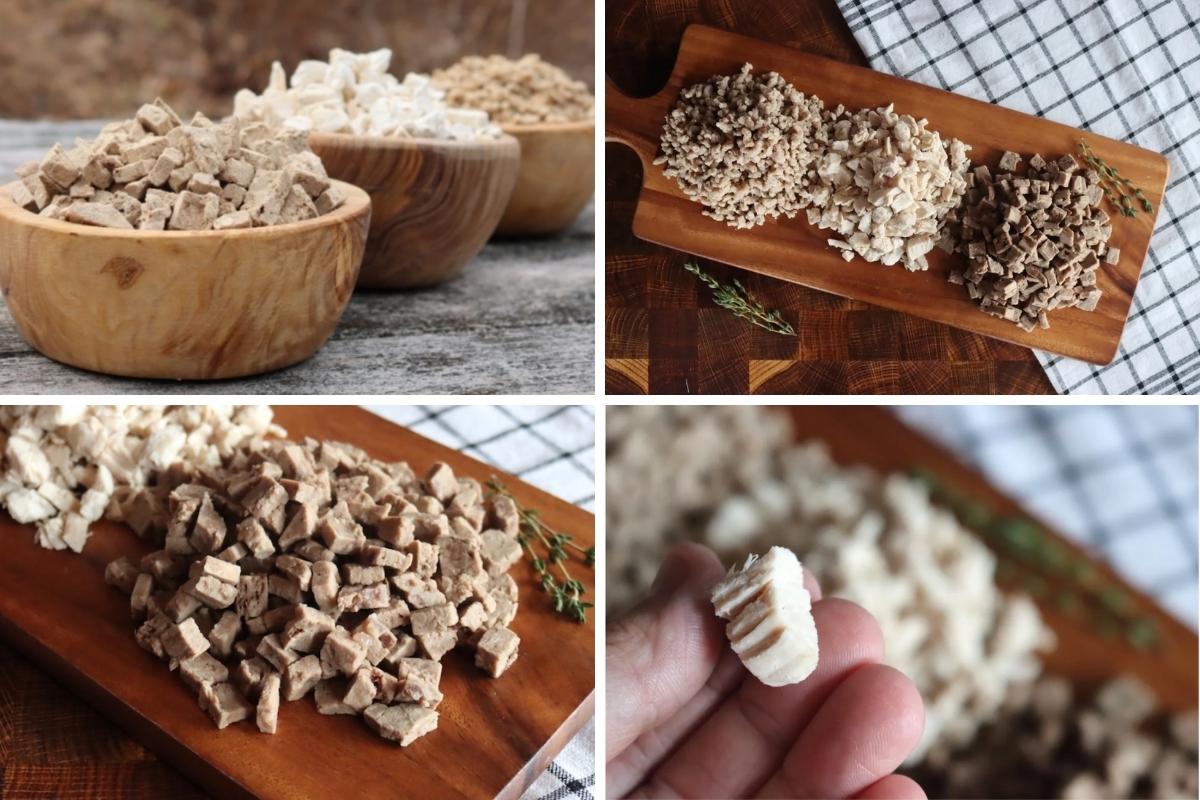
I have an exhaustive guide to the best (and worst) of freeze-dried foods for storage, that covers everything you need to know about selecting and using this type of emergency food supply.
We cook most of our meals from scratch, so I keep a lot of freeze-dried ingredients (carrots, mushrooms, etc) on hand we can keep cooking our favorite meals even if we don’t have access to a grocery store for an extended period. Emergency Essentials is the best option for freeze-dried ingredients.
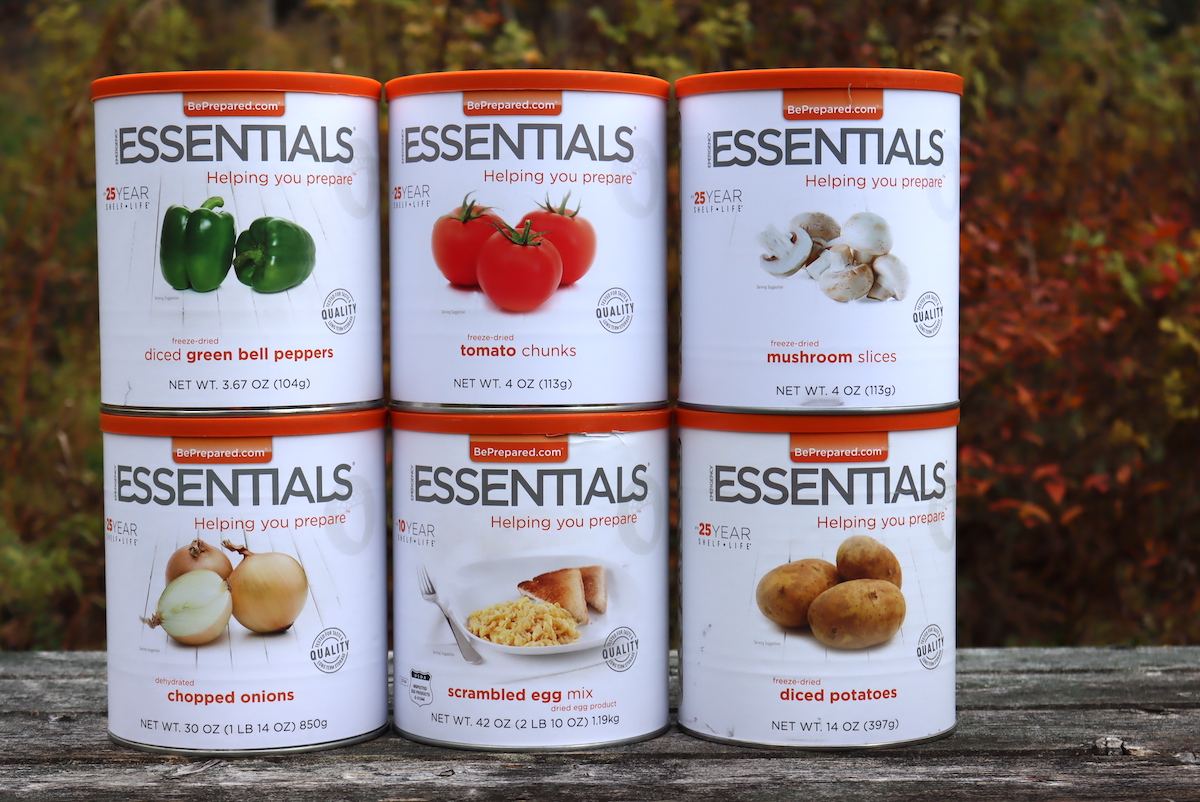
Most people that don’t cook regularly would be better off with the prepared emergency food kits. For prepared emergency meals, my favorite options come from Valley Food Storage and Nutrient Survival.
Freeze-dried food is a great option to have on the shelf, no matter what type of emergency. Easy to prepare, flavorful, nutritious, and it has a 25-year shelf life. If you’re looking to just set it and forget it, and you don’t have a lot of experience cooking, this is a good option for your back closet.
The food is already prepared, you don’t need to know how to cook (or extra ingredients). Just whip out the kit and you’re set.
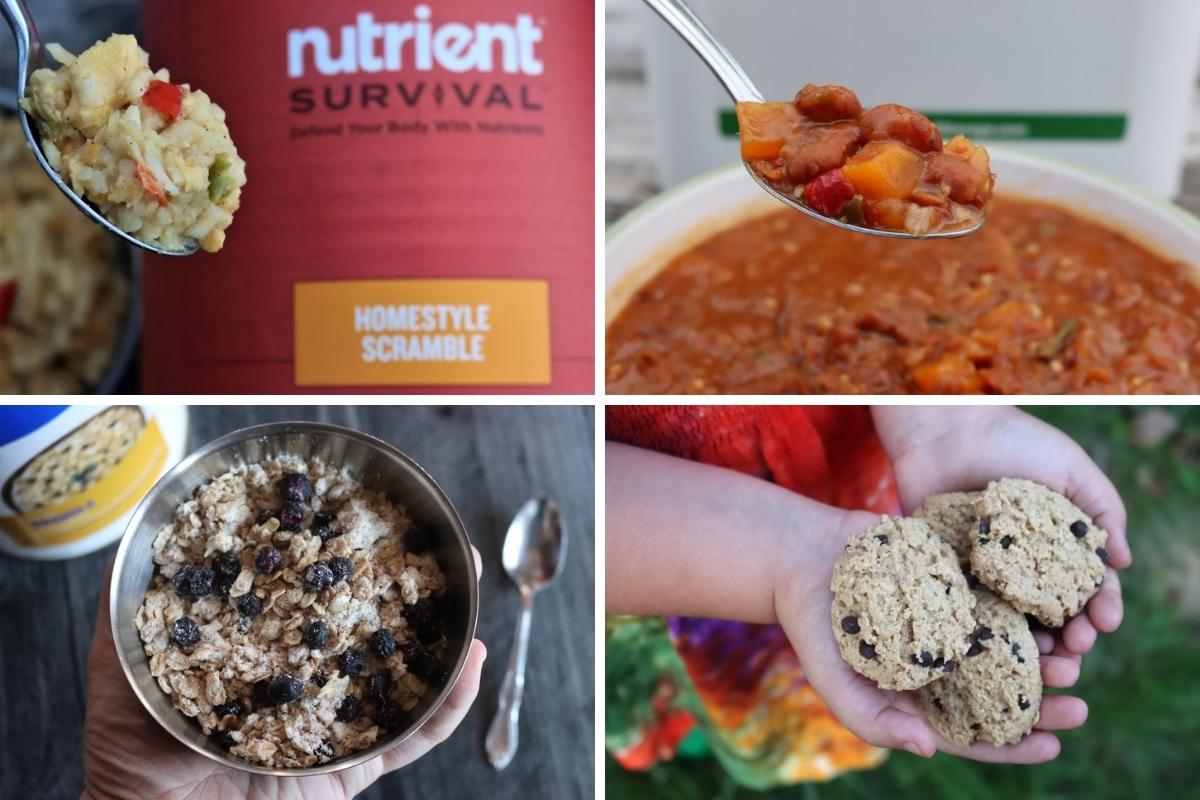
The only downside is it’s the most expensive option. Easy in terms of planning, it’ll save you a lot of time…but everything comes at a cost.
If you are going to invest in freeze-dried food, here are the best options for each type:
- Best Budget Emergency Food Kits: My Patriot Supply
- Best Emergency Food Company: Valley Food Storage
- Best Nutrient Dense Emergency Food: Nutrient Survival
- Best Emergency Pantry Ingredient Supplier: Emergency Essentials
- Best Easy to Prepare (Single Serving) Emergency Food: Mountain House
You can also freeze-dry your own food at home if you have a home freeze dryer. We just took the plunge and purchased one this year. We produce so much of our own food, and converting it into long term food stores just makes sense.
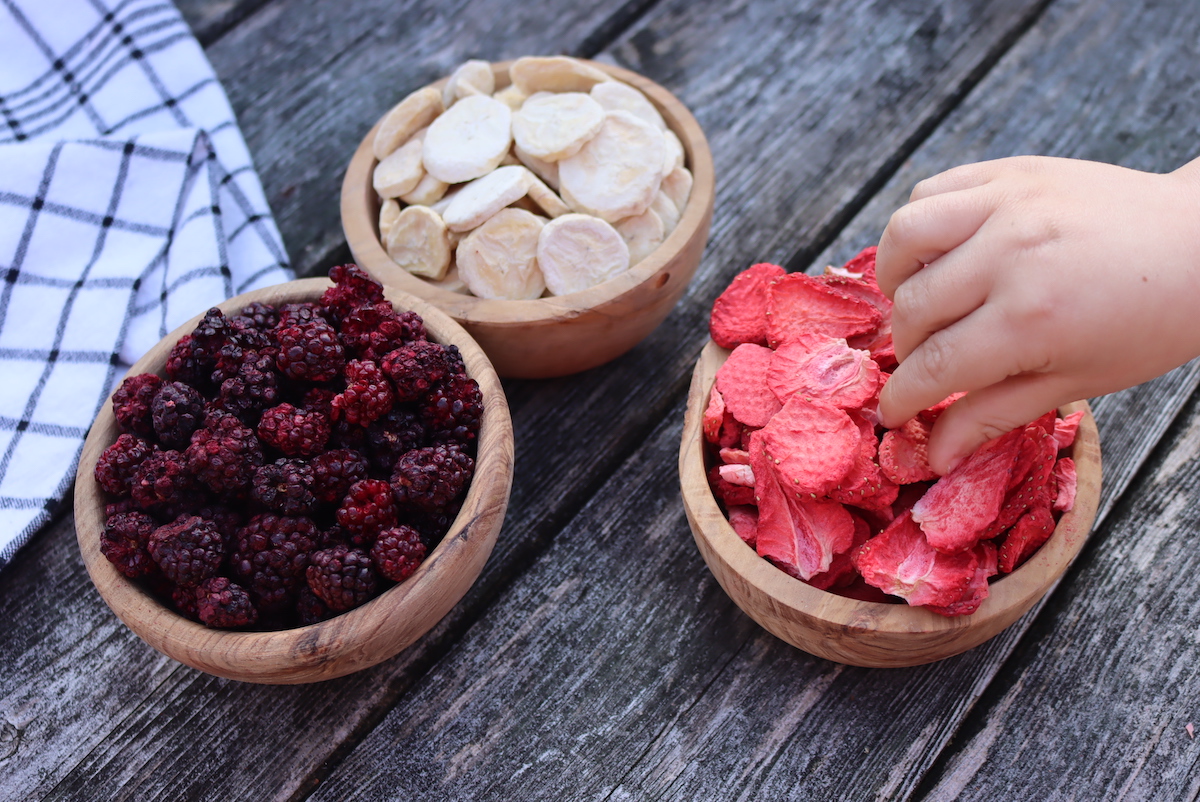
Meals Ready to Eat (MREs)
One of the most convenient types of emergency food supplies is MREs or “Meals Ready to Eat.” They are already prepared food that’s can stored for years, and then eaten as is without any preparation.
Unlike freeze dried food, you don’t have to add water to MREs.
They do come with a “flameless heat pack” that activates with a small amount of water. Literally 2 tablespoons of water is enough to heat the whole meal, and since it doesn’t even touch the food the water doesn’t have to be potable. Really any liquid will work in a pinch.
(Or, you can just eat the meal cold right out of the package if you’re in a hurry.)
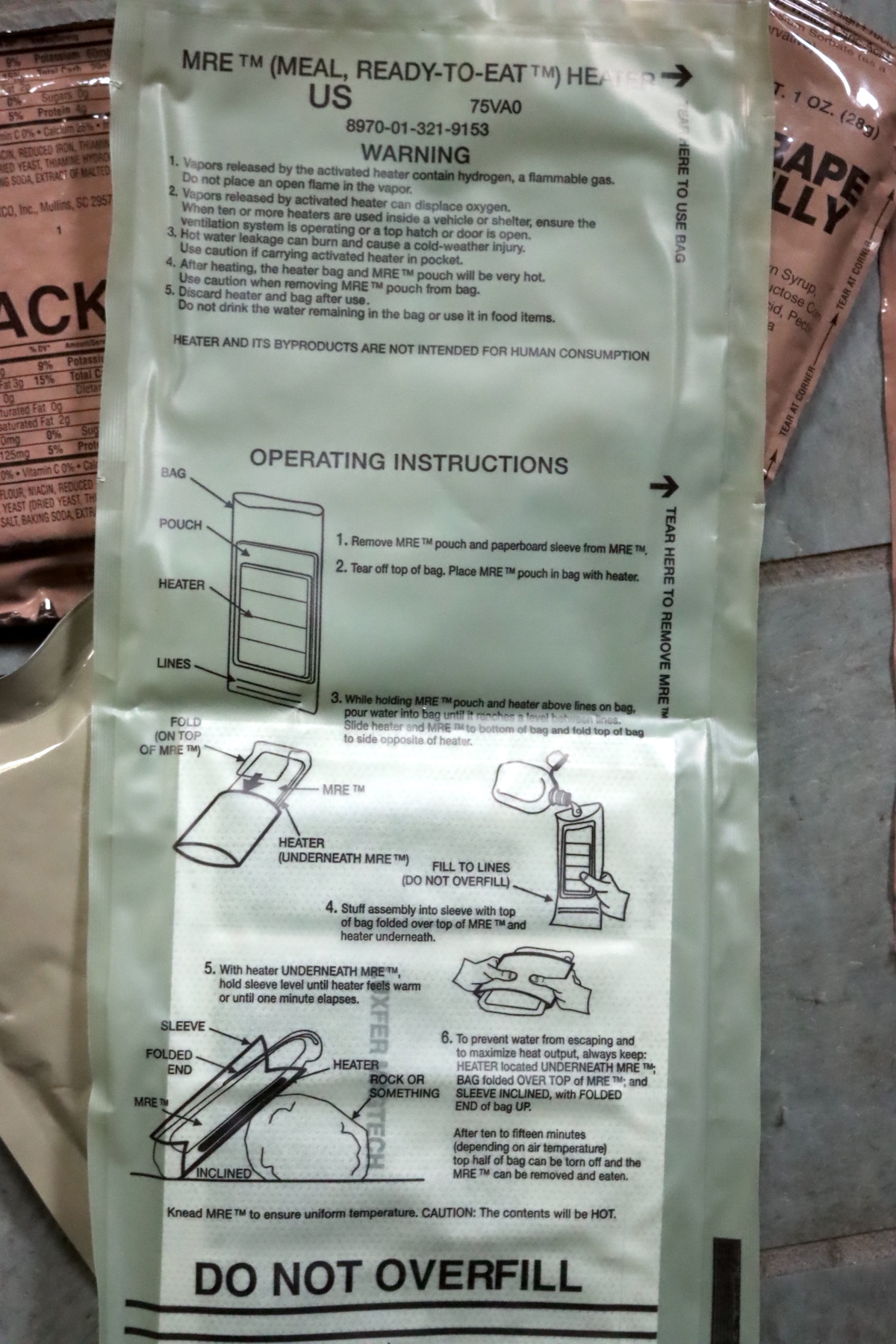
There are two main types of MREs: Military and Civilian. I wrote a guide to the Best MREs available that takes you through the differences, but in a nutshell, the military version has more protein and calories and less sugar/carbs.
The Military versions are actually field rations that are given to soldiers in conflict zones, so you better believe they need high quality food and nutrition to fuel them through missions.
Civilian types are used during emergencies by groups like FEMA, and they’re deployed mostly during natural disasters like hurricanes and fires. They’re meant to keep you fed for a short period, and as a civilian, it’s not expected that you’re doing much heavy work or lifting (beyond waiting for evacuation). That’s why they’re mostly comfort foods, and lower protein.
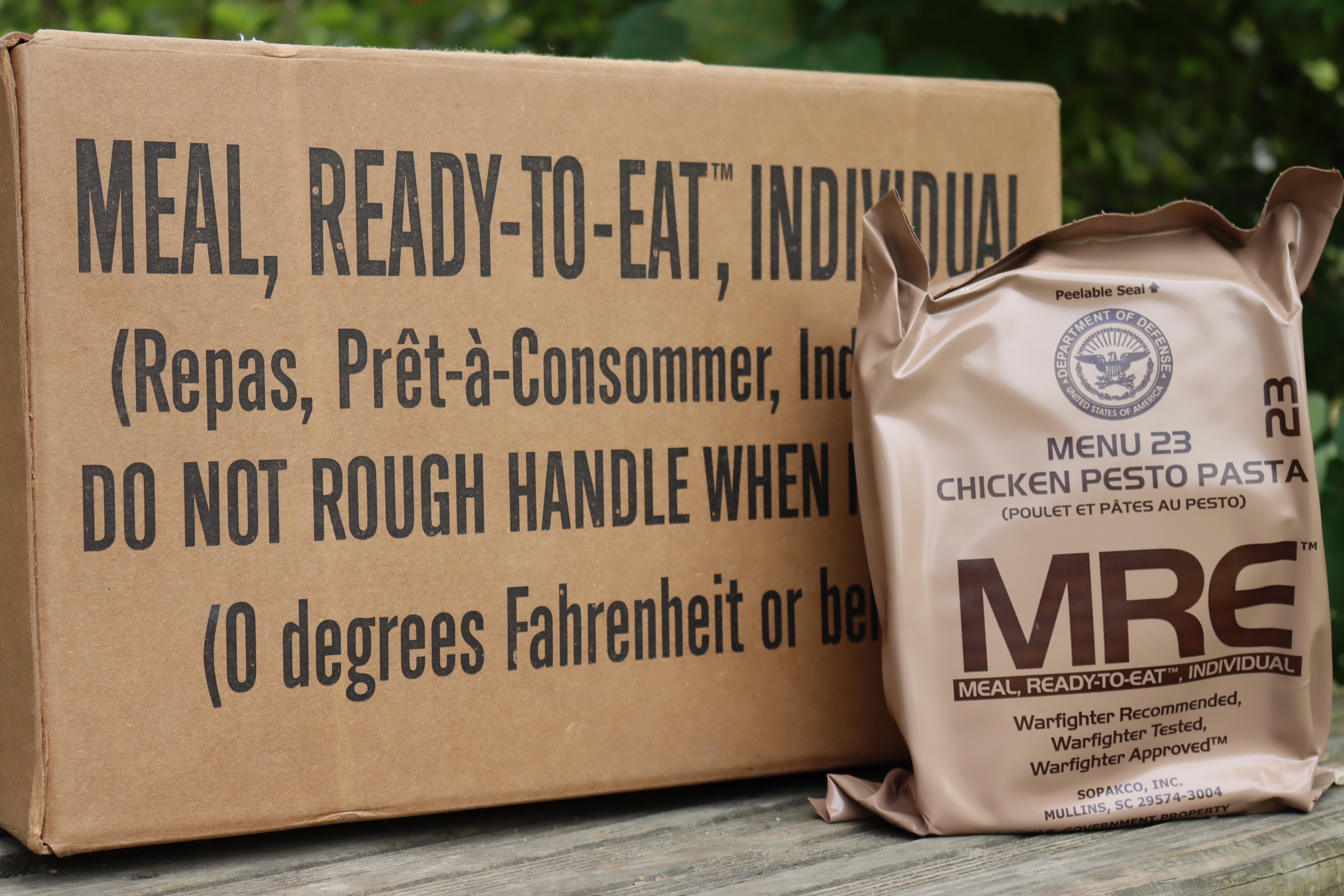
MREs are great in areas where water availability (especially potable cooking water) may be a concern since they’re self-contained.
The downside is they’re relatively heavy since you’re carrying both water and food together. They’re also the most expensive option available, at around $10 per meal.
That said, they’re also some of the most calorie-dense and easy to prepare options.
MREs can be difficult to find, but there are a few dependable suppliers:
- Optics Planet has a number of Civilian MRE options like Sopakco Brand, as well as both types of Military Grade MRE Case Packs (A&B).
- Emergency Essentials and My Patriot Supply carry Civilian MREs from MRE Star Brand.
- The Ready Store sells both Military Grade and Civilian MREs, and they’re one of the few places you can purchase individual meals (rather than case packs). They’ll also sell you just the flameless heaters, which are hard to find other places.
Shelf Stable Dry Goods
The emergency foods of times past were little more than shelf-stable dry goods that were naturally kept on the pantry shelf all year. Things like flour, beans, rice, sugar, and salt.
If you know how to cook from scratch, shelf-stable dry goods are by far the most economical way to build an emergency food supply. Safely storing dry goods is one of those skills that we’ve lost in the modern era, but it doesn’t take that much expertise to simply store a bit of shelf-stable food on your pantry shelf (provided you’re using it and cycling it regularly).
We cook all our meals from scratch and store somewhere between 3 and 6 months worth of dry goods. Since I’m cycling it regularly, I just have to package it well enough to keep it for a few months on the pantry shelf. Half-gallon mason jars work well, as do 5-gallon buckets with gamma seal lids.
We use roughly one bucket of flour a month (35 pounds), so I usually keep around 100 pounds of flour stored in three buckets. I have it when I need it, and three months’ worth of storage requires little more than a tightly sealed container.
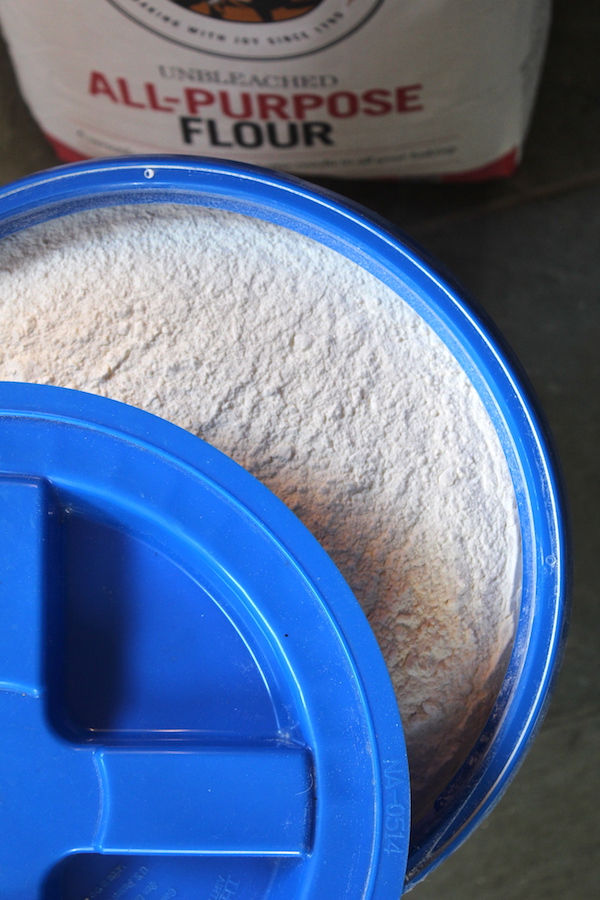
Packing away a long-term emergency food supply takes a good bit more effort, since improperly stored food can spoil in the long term. You’ll need to learn how to seal mylar bags, calculate oxygen absorber needs, and all manner of other considerations.
I actually don’t recommend this method, though it’s seemingly very popular in preparedness communities. There’s no reason to seal flour away in mylar bags for 25 years…when a year’s worth will keep just fine in a jar or bucket as you use it down in your regular cooking.
Storing dry goods implies that you know how to cook anyway, so you’d better get used to cooking with these ingredients. Just store what you use and what you know how to cook, then cycle it as you use it every 6 to 12 months.
If you don’t know how to cook, don’t expect that you’ll suddenly learn how to cook dry beans from scratch in the midst of an emergency. Go for another easier to prepare option, like freeze-dried meal kits or MREs.
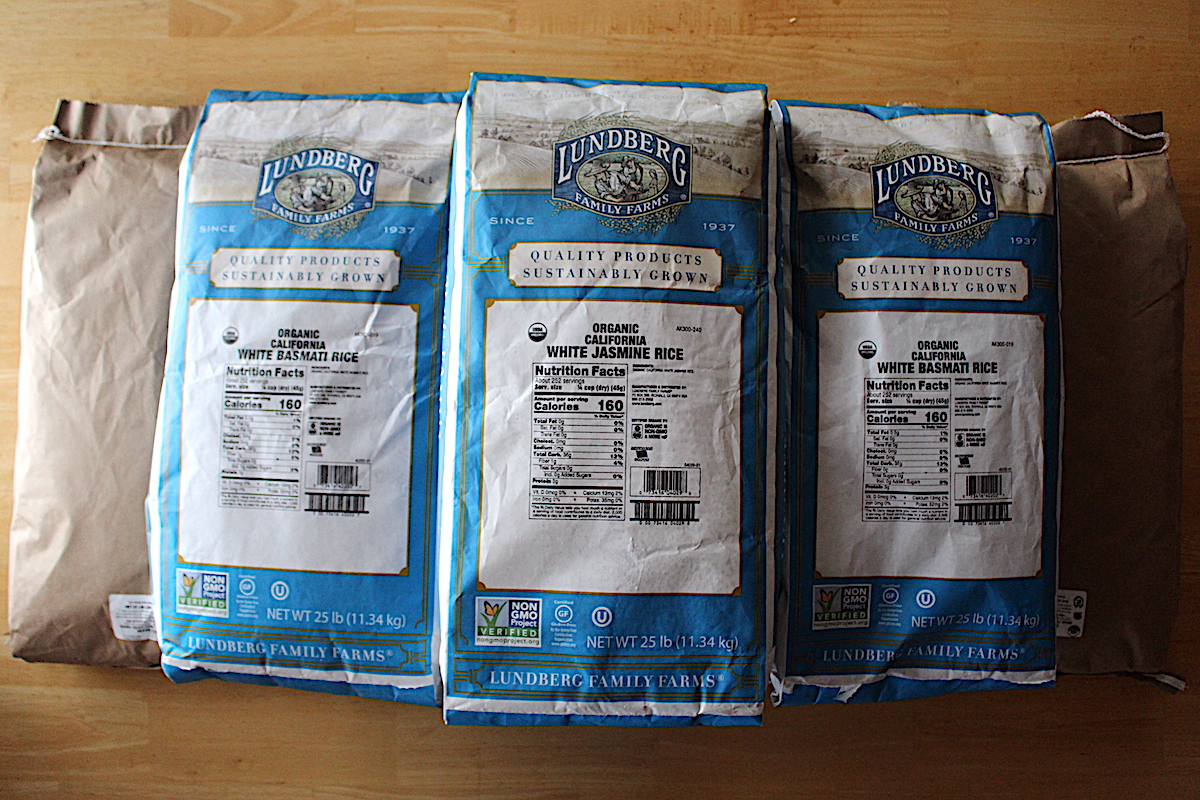
Shelf Stable Versions of Perishable Ingredients
Bulk pantry ingredients usually require some amount of perishable ingredients to make a meal. Flour can be used in basic sourdough recipes with little more than water or salt, but you’ll need milk, butter, and eggs if you hope to make biscuits, pancakes, muffins, or most other things.
Having shelf-stable versions of perishable pantry ingredients can actually come in handy long before an emergency. It’s a simple luxury to have on hand so you don’t have to run to the store at the last minute when you run out of milk or eggs before your next shopping trip.
While it’s convenient for everyday cooking, it’s totally life-changing in an emergency if you can’t get fresh groceries for one reason or another.
There are a lot of choices out there, but good choices for most people include:
- Powdered Milk or Evaporated Milk
- Dried Egg Powder (wonderful for baking!)
- Clarified Butter, Canned Butter, or Butter Powder
- Cheddar Cheese Powder
- Dried Cream Powder
- Buttermilk Powder
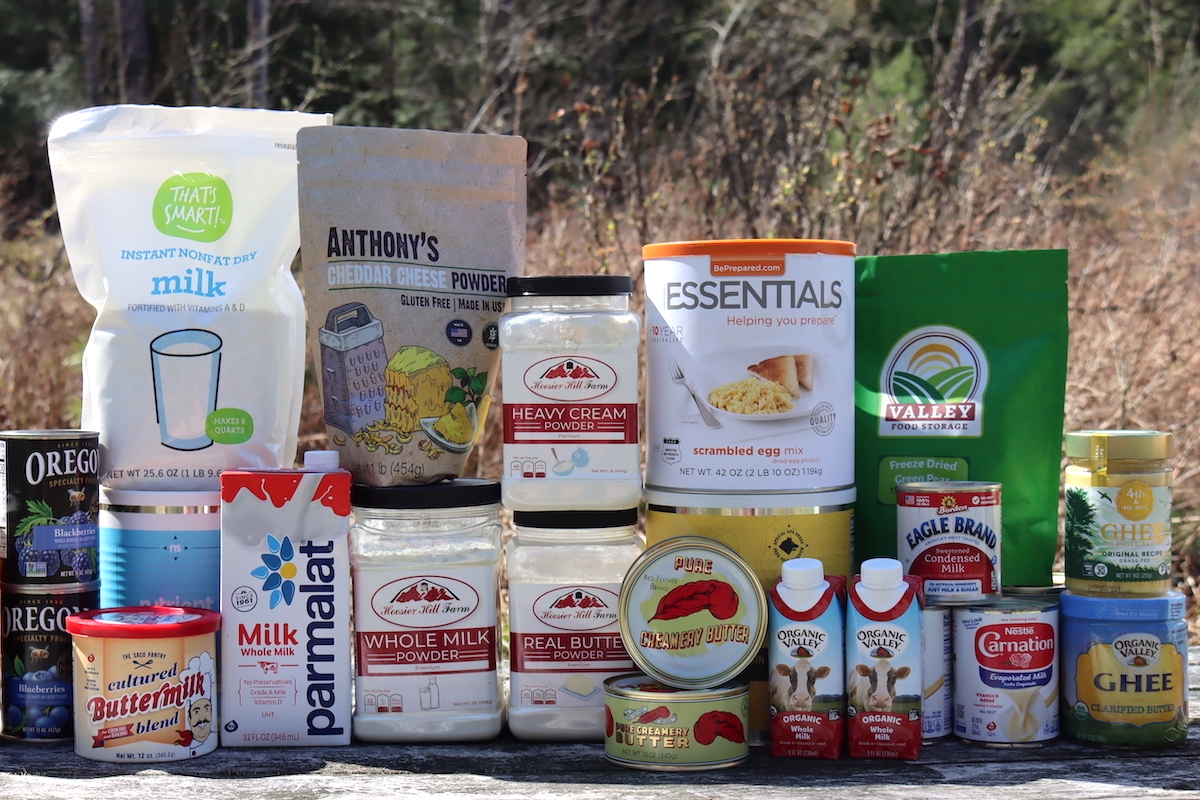
Canned Food
Canned food is a great way to add variety to your emergency food supply, whether it’s home-canned food in mason jars or store-bought canned goods.
Shelf-stable pantry goods like flour, rice, sugar, and beans should make up the bulk of your calories in the long term, but there’s nothing like canned vegetables and fruit to add variety and nutrition to your stores in an inexpensive way.
If you are able to can your own food at home, I’d suggest that because it’s generally healthier than store-bought. You can control how much sugar, salt, and seasoning goes into the jar, and you’ll likely choose better quality meat and produce for your family than the canning plant chooses.
Never canned before? No worries.
Invest in some canning supplies, and then start by reading my beginner’s guide to water bath canning, which will cover everything you need to know to put up jam, jelly, fruit, and pickles.
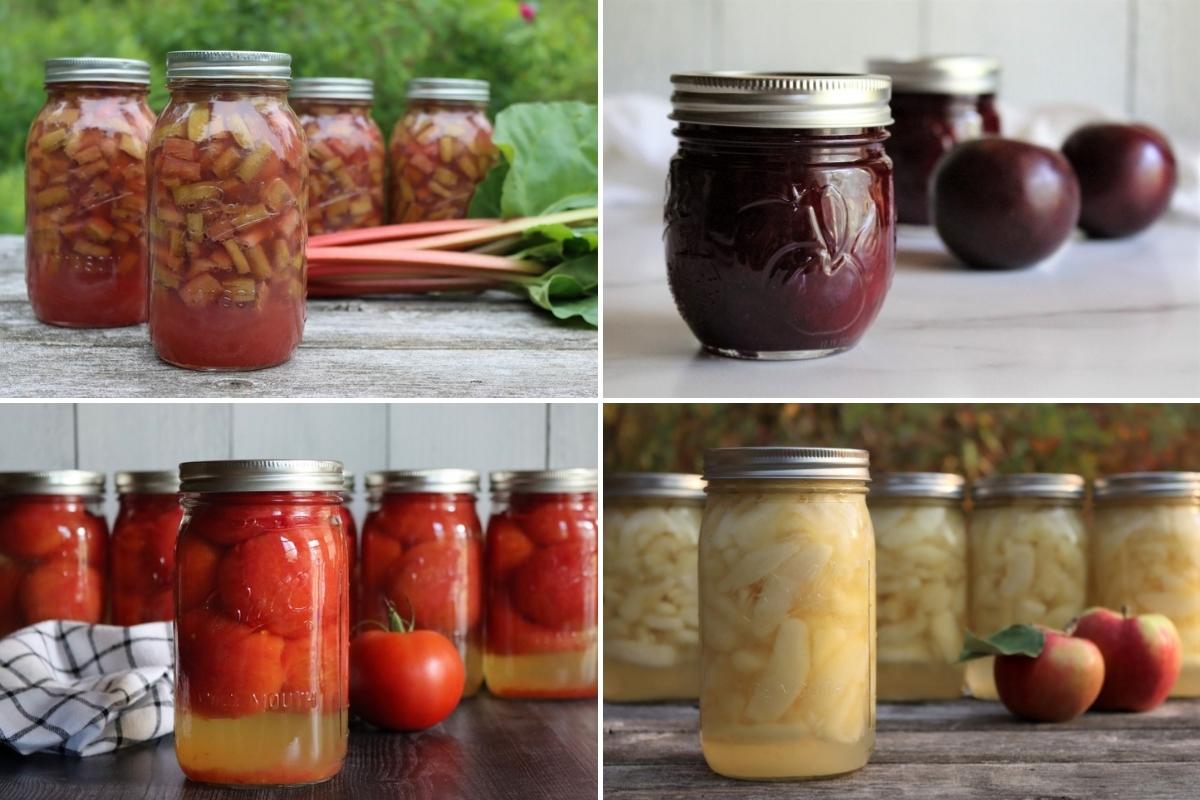
If you’re looking to preserve more nutrient dense foods like vegetables and meats, then you’ll need to learn how to use a pressure canner and familiarize yourself with pressure canning recipes.
I know pressure canning can be intimidating at first, but they’re no better way to put a real meal in a jar than with a pressure canner. You’re not just putting up jam, you’re putting away nutritious food that’ll fuel your family in an emergency (or on a busy weeknight).
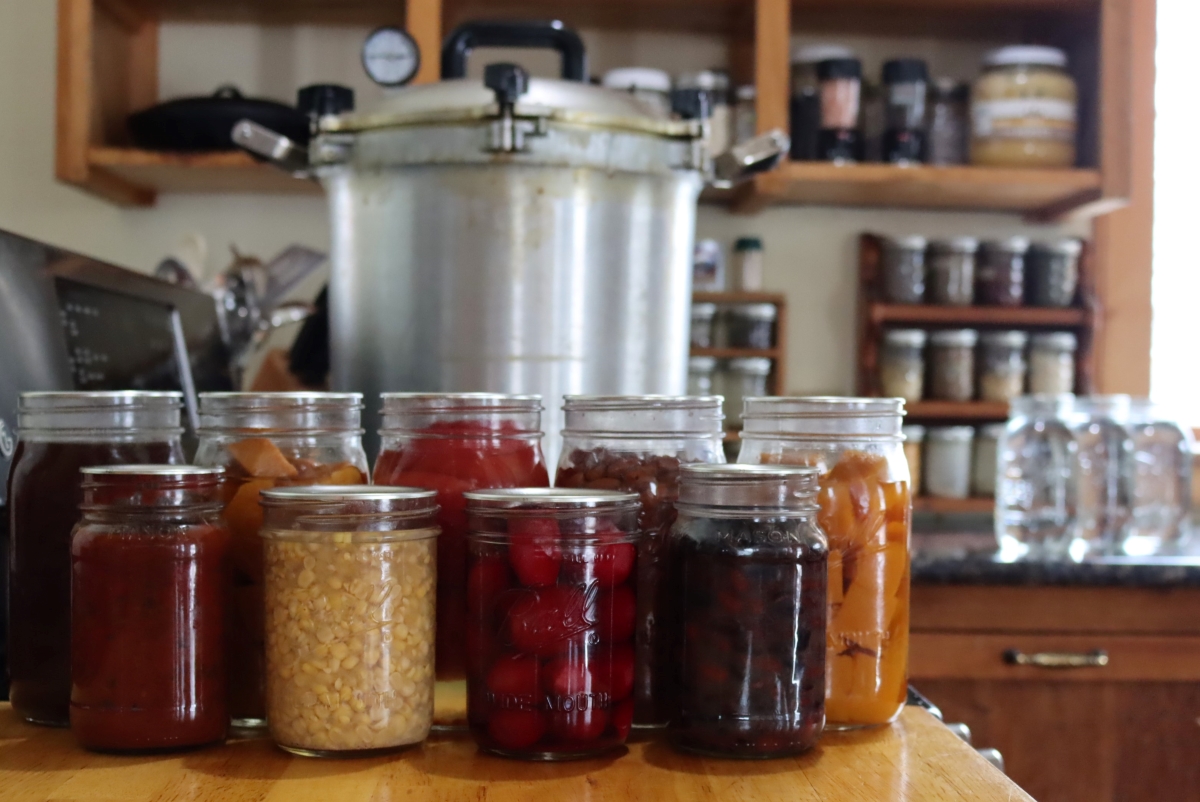
I’ve collected all the best canning recipes into a number of conveniently organized articles to help you put up just about everything under the sun:
- 30+ Jam Recipes (with Canning Instructions)
- 50+ Fruit Canning Recipes
- 50+ Vegetable Canning Recipes
- 30+ Meat Canning Recipes
- 30+ Soup Canning Recipes
- 50+ Meal in a Jar Canning Recipes
My Family’s Emergency Food Supply
So now the million-dollar question, what do I store?
We cook most of our own food, and I know how to cook without electricity and other essentials, so the bulk of our storage is in non-perishable pantry staples. That said, I have quite a bit of long-term food storage to balance things out, and add nutrition and variety.
I keep a balance of foods from each type of food in my pantry, so I have options for cooking all my family’s favorite comfort foods, as well as simple heat-and-eat type convenience foods.
For shelf-stable dry goods, I always have a few 5-gallon buckets with gamma seal lids containing white flour, polenta (cornmeal), rice, beans, sugar, and salt. Each bucket contains around 30 to 35 pounds of food.
Beyond that, we also keep:
- Dried Milk Powder
- Clarified Butter
- Dried Cream Powder
- Buttermilk Powder
- Cheddar Cheese Powder
- Dried Egg Powder (For cooking)
- Freeze Dried Breakfast Scramble (For scrambled eggs)
- Freeze Dried Fruit (because it’s delicious)
For canned food, we put up literally hundreds of jars of food each year, so I don’t rely on commercially canned food, except for things you just can’t can at home. Things like evaporated milk and coconut milk make up the bulk of our store-bought canned goods.
In terms of prepared food, we always have MREs on hand for times when cooking isn’t an option for whatever reason. They also save on dishes, since you eat them right in their packaging.
For convenience, we keep some prepared emergency food kits in the house as well.
I’ve tried every brand, and we have our favorites from each. Our absolute favorites are Valley Food Storage and Nutrient Survival. We like just about everything from My Patriot Supply too, and they’re the best economical option for prepared emergency food.
To ensure some fresh food in our diet, we always have a garden growing. Even here in our cold climate, there are plenty of frost-hardy crops that will keep producing right until Christmas. For the dead of winter, we also grow microgreens indoors.
Early in the spring, our perennial vegetables are the first to emerge from the soil since they’re just dormant from the previous season.
Foraging edible wild plants supplements our diet year-round as well.

Emergency Supplies (Beyond Food)
While food may be one of your first considerations, it’s not the only thing to plan for in an emergency. Depending on the nature of the emergency, it’s good to prepare to supply your own water and sanitation at a bare minimum. Energy (for cooking, heating and charging devices) can also be really helpful.
In some emergency situations, you may also need to have a store of relevant medicine, and planning for your families security is never a bad idea.
Water
I have a separate article dealing with emergency water filtration and purification, but the short version is that a Berkey filter is the absolute best option. It works wonders on tap water now, but it also can filter river/stream/lake water after an emergency.
Berkeys remove 100% of biological contaminants from water, along with just about everything else (heavy metals, etc).
They’re expensive, but worth it, and each filter is rated to last for many years. As an economy option, consider a Lifestraw Filter Bottle as a good cheap piece of insurance when it comes to water filtration.
For storage, canning water works best for us.
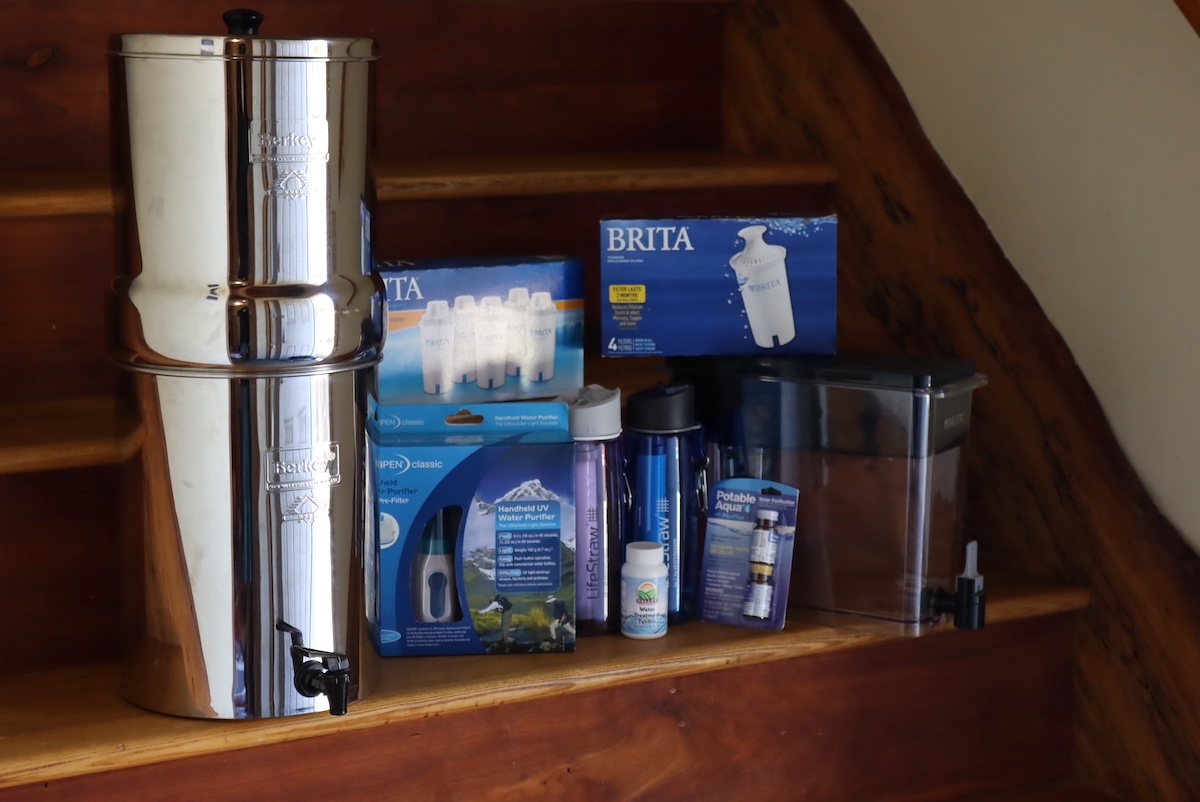
Sanitation
Even in short-term emergencies, access to sanitation can be a huge consideration. If the toilets aren’t working, and you can’t wash dishes or clean clothes, things get messy fast.
We use a pedal-powered off-grid washing machine, and I’d recommend a composting toilet for waste. If you’re looking for an inexpensive option, a bucket camping toilet will get the job done in a pinch, and it’s literally a few dollars.
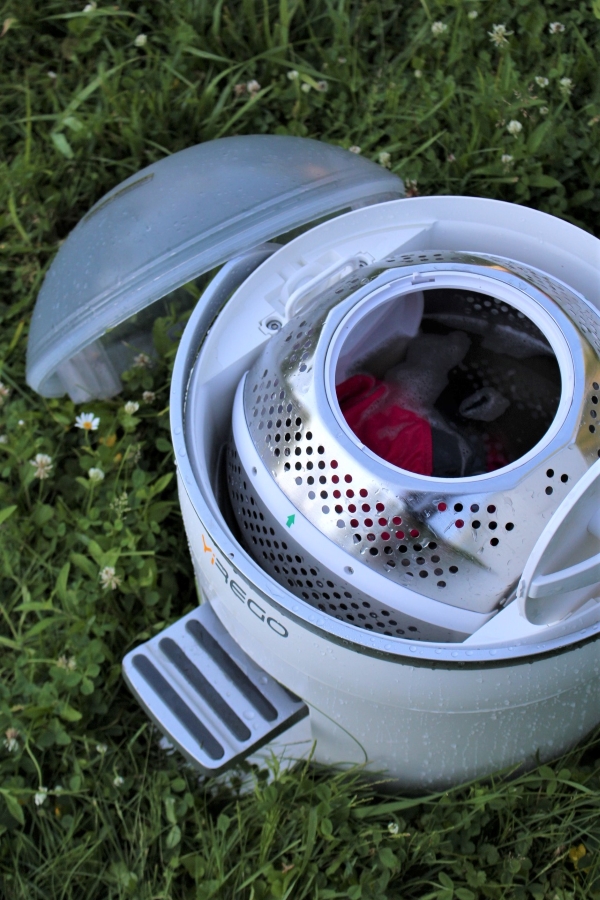
Energy
We keep a Jackery portable power bank on hand as a backup, and it’s amazing when the grid’s down. More than just a quick way to charge devices, it also lets us run appliances, cook meals, and stay in touch with the world. When the grid is up you can charge it and then store it until needed. When it’s not, you can charge it with portable solar panels that go with it.
For grid-down cooking, consider investing in a jet boil camping stove and a few fuel canisters for the short term. For longer-term emergencies, Biolite makes a camp stove that will burn random sticks and twigs from the yard, and generates electricity from the waste heat during cooking.
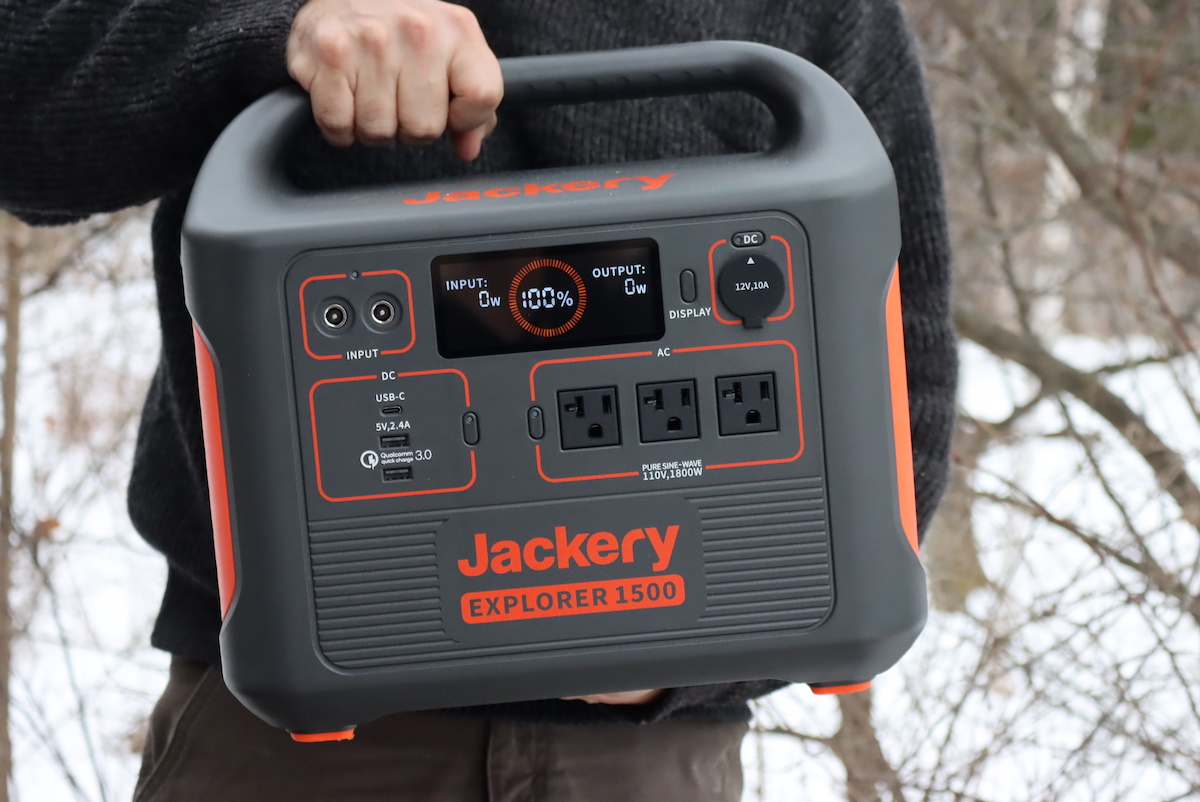
Medicine
Most people already have a first aid kit on hand, but if you don’t, now’s the time to invest in one, be it a small everyday carry kit, car emergency kit, or a fully stocked backwoods medical backpack. A little bit of antiseptic can be absolutely life-saving, and it’s inexpensive to buy ahead of time.
Beyond first aid, basic medications are essential. Make sure you have access to things like Tylenol, ibuprofen, allergy medication, cough, and cold essentials, and other basic medicines your family might need.
Most of the causes of death 100 years ago are now readily prevented with antibiotics, but what happens if you can’t get to the emergency room? There is one company that prescribes emergency antibiotics for anyone hoping to prepare in advance. A single kit comes with a full course of the five most common types of antibiotics, as well as a book explaining their use.
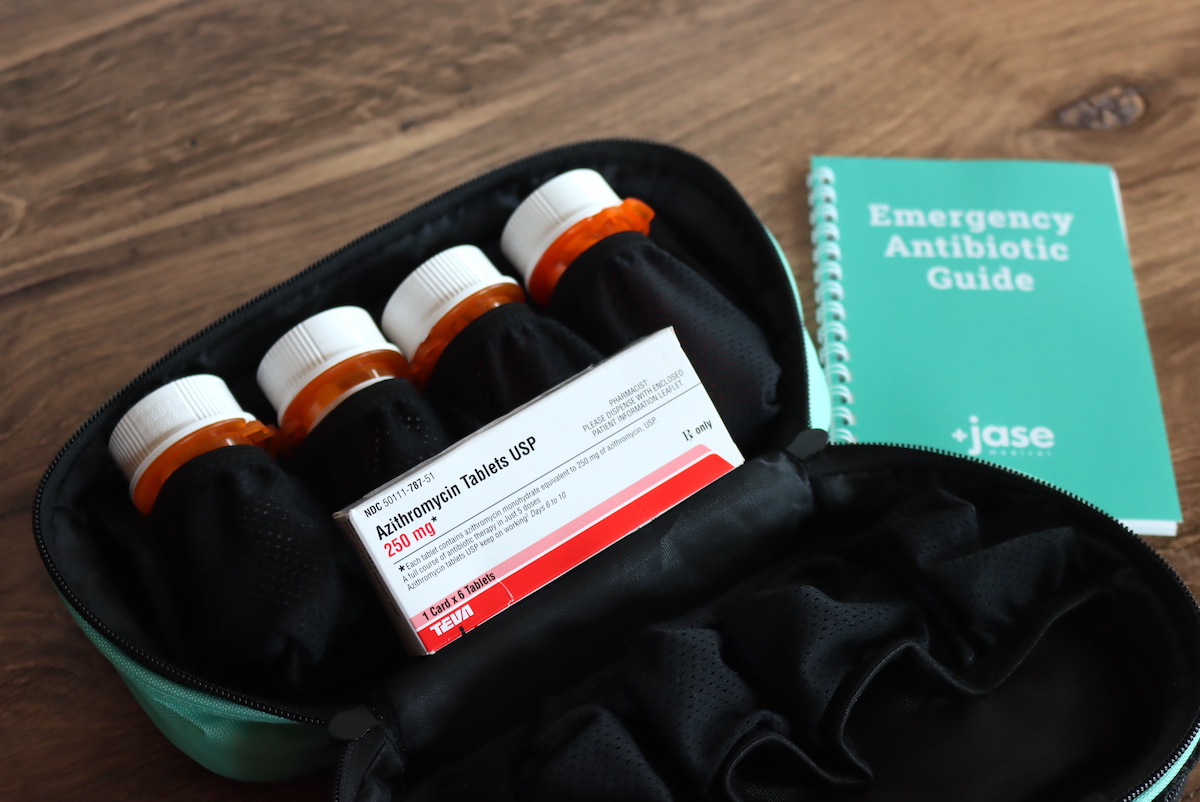
Security
Regardless of the emergency, you’d most likely be better off with one of these (or maybe one of these) in your back closet for security. If that’s not an option where you live, consider Air rifles or crossbows, which are less regulated.
All three are good options not only for security but also for stocking your freezer and supplementing your emergency food supply.
Preparedness Resources
Looking for more preparedness resources to ensure your family has what they need before the next emergency?
- Survival Gardening: Our Real Life Dry Run
- Best (and Worst) Emergency Food Suppliers
- How to Prepare for WWIII
- Best MRE Meals (Meals Ready to Eat)
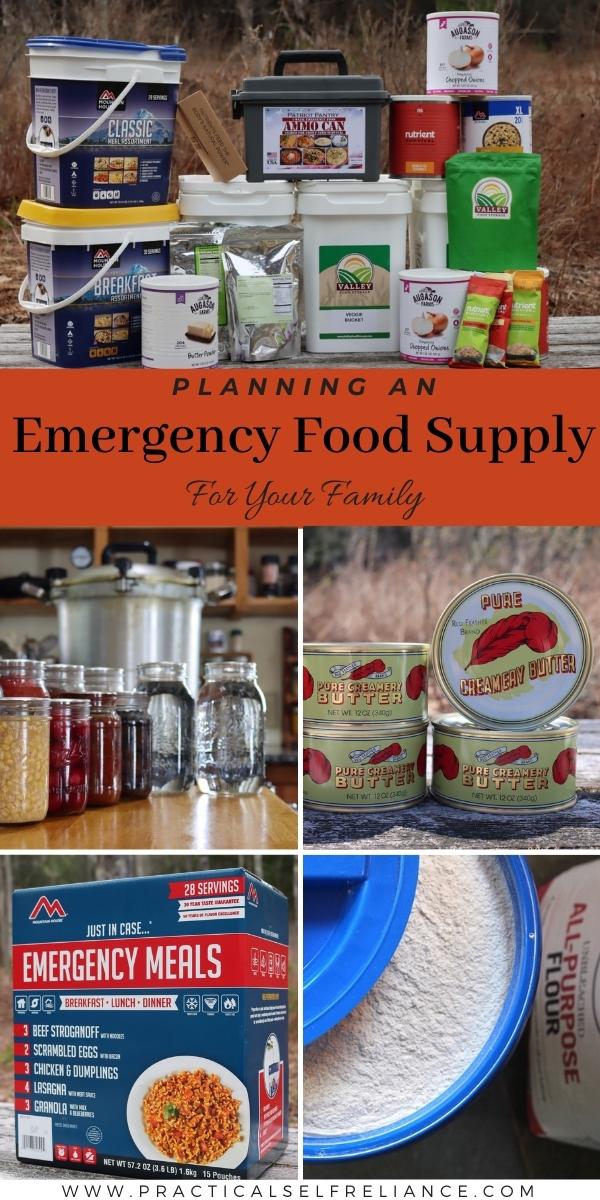
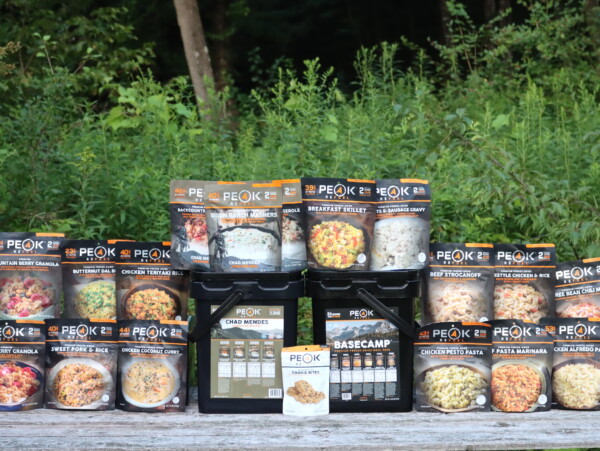
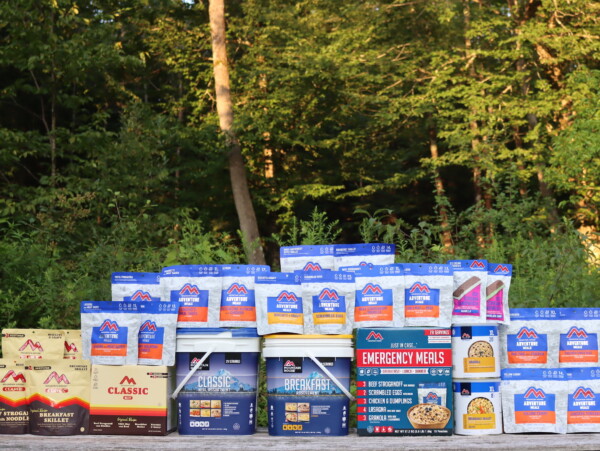
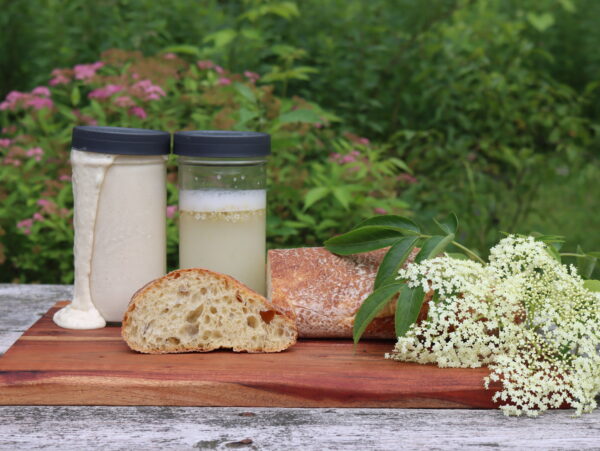
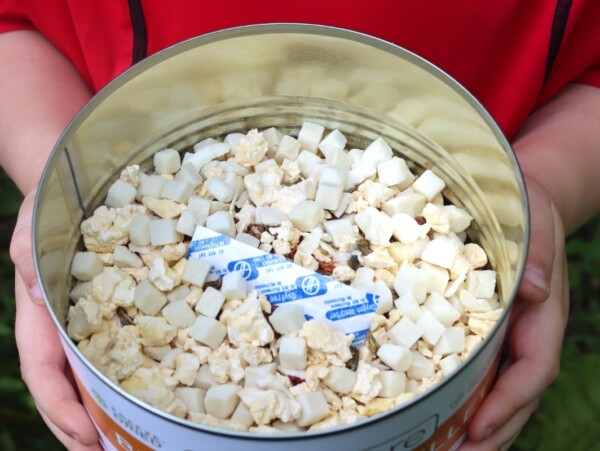
I was sure i had found a preper site that was in Europe but all prepers are American if only i had acess to all them food sites here in Ireland you cant get delivery if you can its a lot more than yous pay.The cost of living and the energy prices is as bad as it is for America and the Irish have lost all the old ways of a 100 years and more they are going to get a shock when SHTF our Gov have sold us out they have opened our borders and the UKRens Afaricans have changed the Irish land scape maybe you may be able to tell me the best long term food suppeler to go for i can i think get petriotpantry agarson food wise and others but there cery dear the shipping is of the hook anyways i enjoyed you page take care try stay safe iv had enought of this world cant wait till my lord and saviour comes.
Here is a post that might help you with freeze-dried food for long-term storage. https://practicalselfreliance.com/freeze-dried-food/ I’m sorry you don’t have more suppliers there. I would just keep learning as many skills as you can to provide for yourself and your family.